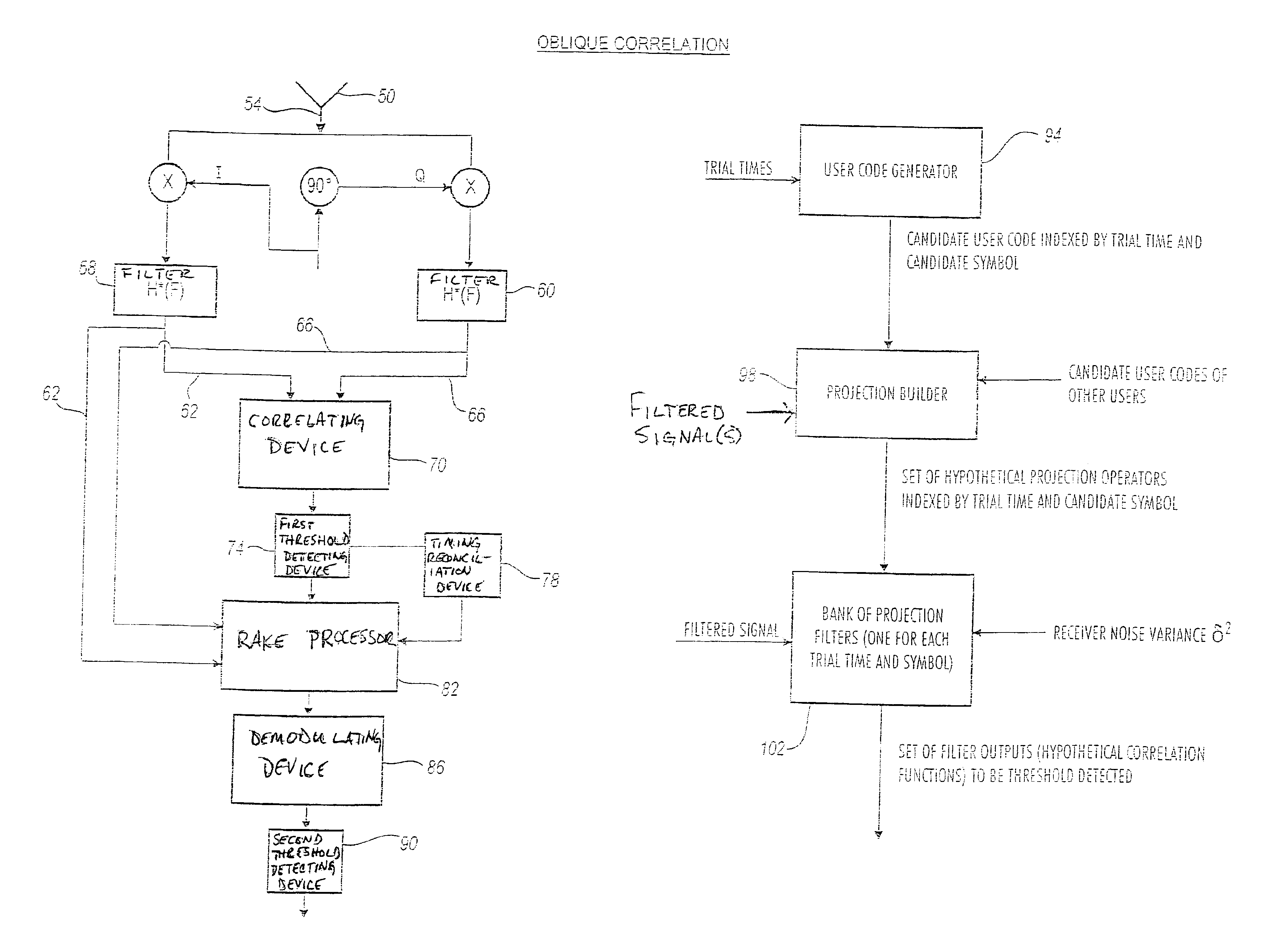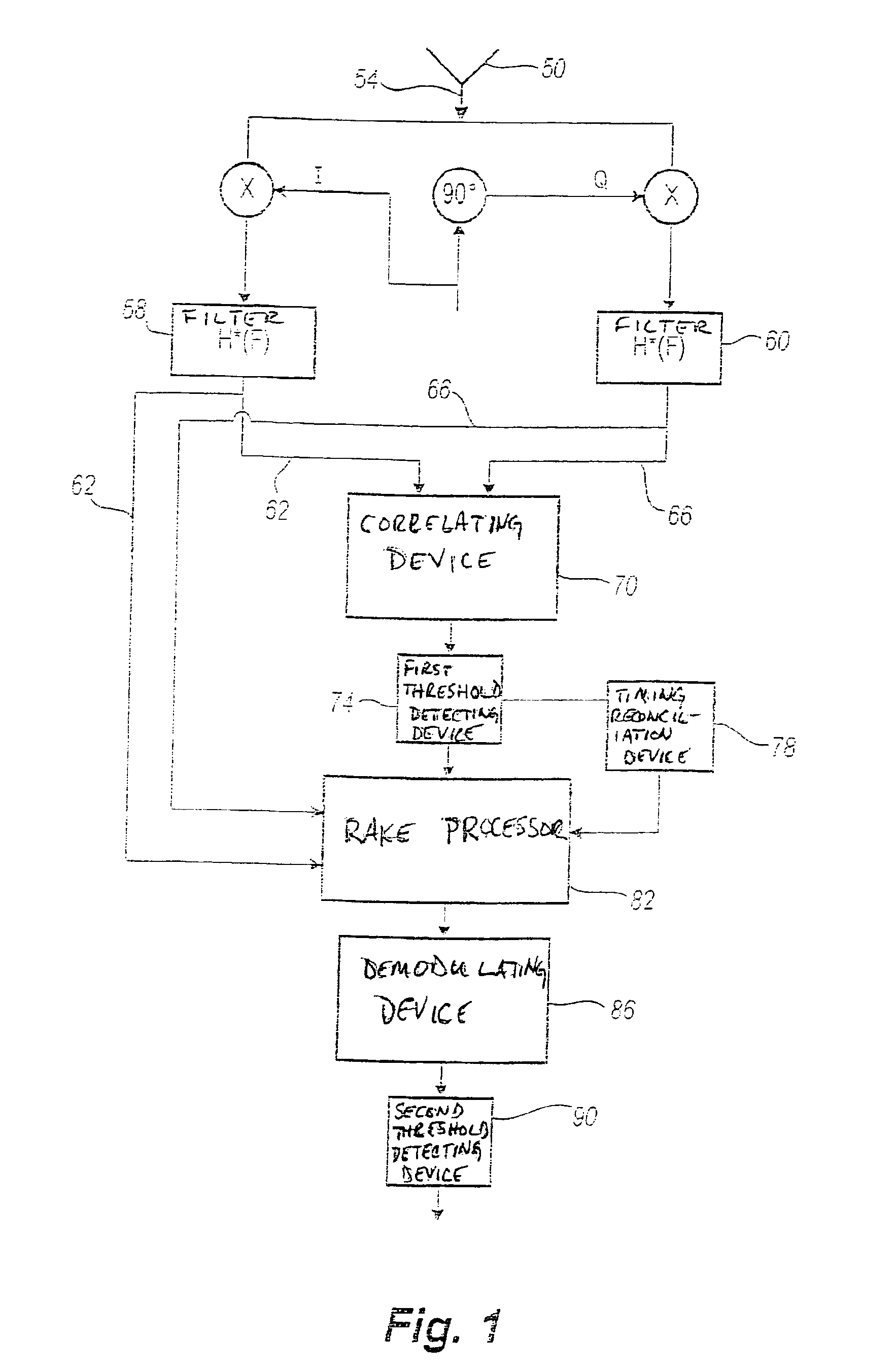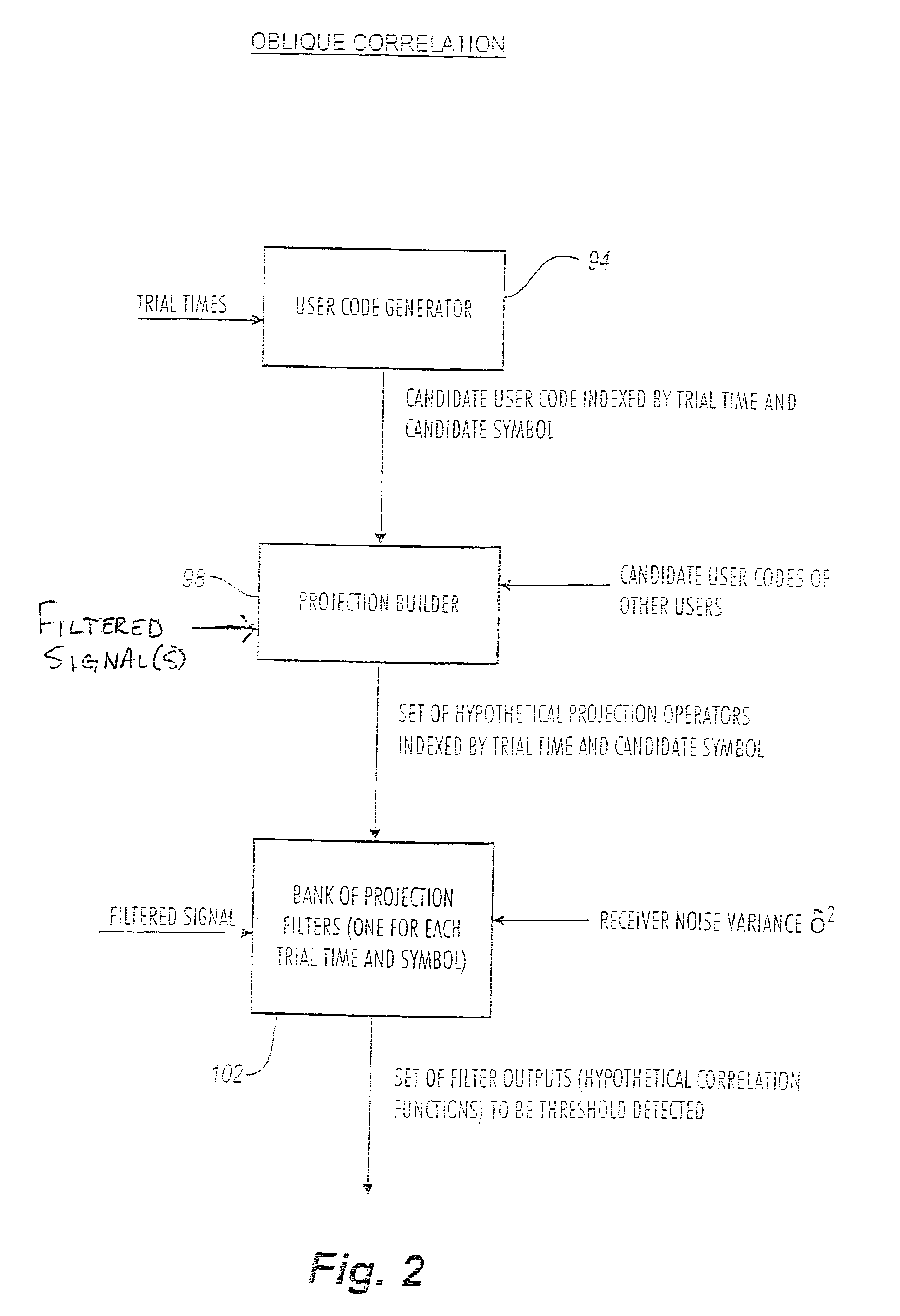Rake receiver for spread spectrum signal demodulation
- Summary
- Abstract
- Description
- Claims
- Application Information
AI Technical Summary
Benefits of technology
Problems solved by technology
Method used
Image
Examples
Embodiment Construction
[0038]The present invention provides a software architecture and the underlying mathematical algorithms for demodulating / decoding communications signals containing interference noise. This invention is generally applicable to CDMA systems (and other spread spectrum systems), Frequency Division Multiple Access systems (FDMA) and Time Division Multiple Access systems (TDMA) and particularly for spread spectrum systems, such as CDMA. In spread spectrum systems, interference noise is typically due to a dense population of signals using the same intervals of the frequency spectrum, such as in high user density cellular phone applications, or such as in the intentional interference of radar or communication signals by nearby jammers.
[0039]Single Antenna Systems
[0040]An overview of the current architecture for detecting signals from an ith user in a CDMA system is illustrated in FIG. 1. The architecture employs a single antenna for receiving CDMA signals. The system includes the antenna 50...
PUM
 Login to View More
Login to View More Abstract
Description
Claims
Application Information
 Login to View More
Login to View More - R&D
- Intellectual Property
- Life Sciences
- Materials
- Tech Scout
- Unparalleled Data Quality
- Higher Quality Content
- 60% Fewer Hallucinations
Browse by: Latest US Patents, China's latest patents, Technical Efficacy Thesaurus, Application Domain, Technology Topic, Popular Technical Reports.
© 2025 PatSnap. All rights reserved.Legal|Privacy policy|Modern Slavery Act Transparency Statement|Sitemap|About US| Contact US: help@patsnap.com



